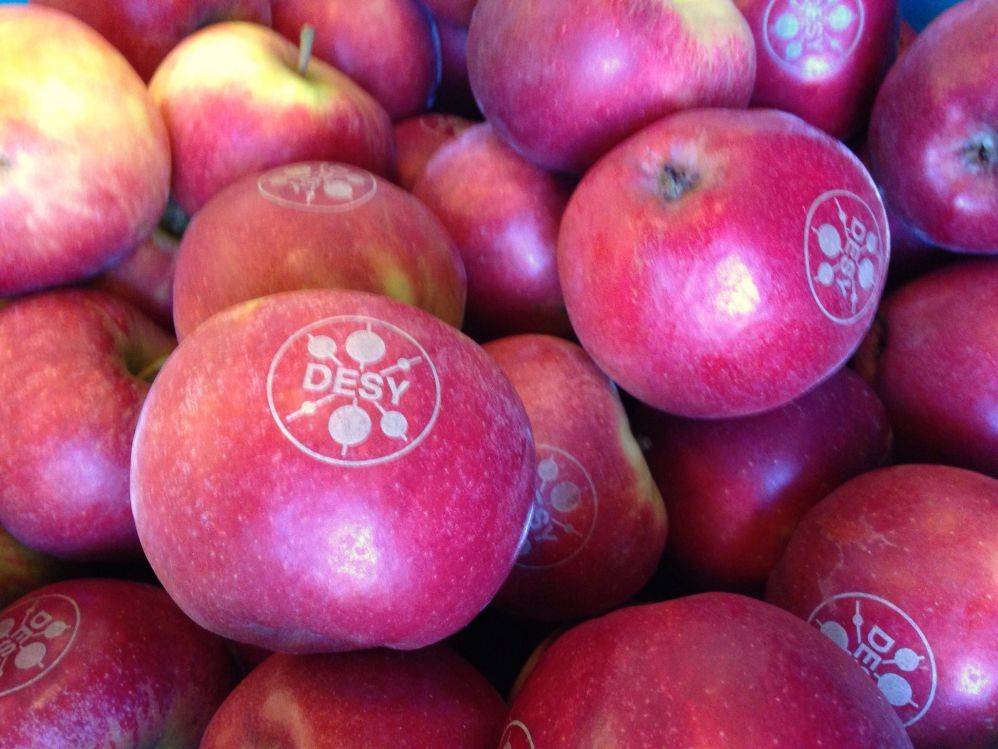Laser labeling of food is a recent innovation that makes it possible to reduce production waste by replacing traditional food labels with laser engraved labels. Laser marking of food is suitable for companies wanting to optimize their production process, saving resources and materials while also decreasing their ecological footprint. The possibilities are endless.
In fact, an increasing number of companies have realized that laser techniques are the key to process innovation. In a recent article we discussed the growing phenomena of natural branding, a process in which traditional food labels are replaced by the laser marking of the skin of food.
Fresh products such as fruits and vegetables can easily be marked through a laser scanning head, a low power CO2 laser source and a software that controls the process. This procedure of laser marking permits us to imprint logos, barcodes, and any type of information on different types of food without affecting their quality. The marking does not affect the organoleptic properties of the food – it is a “friendly process” as it only affects the most superficial layer of the skin of fresh products.

However, fruits and vegetables are not the only types of food that can be marked with the CO2 laser technology. Results have shown that even seasoned and semi-seasoned cheese and hams can be marked.
A case study: machine designed to mark seasoned and semi-seasoned cheese.
These seasoned and semi-seasoned products have always been marked through heat methods. Products are marked with their brand and codes that establishes the batch of production, identify the producer, allow to trace back the origin of the product. The easiest system to mark food is to use a metal to impress a brand by burning the surface of the product.
This traditional method, while being inexpensive, is incredibly slow and inflexible. In order to change the codes to be imprinted, a change in the marking tool is needed.

A more efficient way of imprinting information on food is to use the CO2 laser application. The laser allows to mark the surface of these products faster, with higher precision, and in a more secure way. In comparison to traditional ways of marking food, such as marking through means of heat, laser marking allows us to have an extremely precise process: it provides the possibility to adapt all parameters involved to suit the characteristics of the product to be marked. In this way the process of laser marking becomes the more precise way as it respects the unique characteristics of each product.
A system for marking the dairy products may consist of the following elements:
- Completely washable stainless steel structure
- Conveyer belt
- CO2 laser source
- High performance laser scanning head
- Controlling software
The functioning is semi-automated. The system involves the presence of an operator placing the products to be marked on the conveyer belt. The conveyer belt transports the products to the laser processing space, isolated from the outside with doors that can be opened for inspection and sanitation reasons. Here the laser scanning head, controlled by a software, guides the laser beam on the surface of the product, performing the marking within seconds. In a few minutes only, the operator is able to perform the same operation dozens of times.
The advantage of such a system is its flexibility. First of all, the machine is designed to be modular: each module can be replicated and adapted to the needs of the manufacturer. For example, you can install different laser sources for different applications.
Furthermore, the system allows you to change the information you want to mark very quickly. You just have to modify the parameters inserted in the control software to perform a different process.




